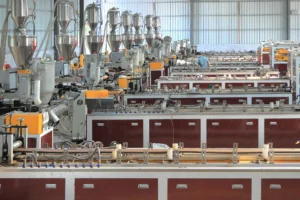PLA-based Wood Plastic Composites: Advancing Sustainability in Eco-Friendly Materials
PLA-based wood plastic composites are revolutionizing the eco-friendly materials industry. Unlike traditional petroleum-based WPCs, PLA-based WPC are biodegradable, offering a sustainable solution for reducing environmental pollution, mainly white pollution caused by plastic waste. Through advanced research, these composites achieve better strength, compatibility, and environmental performance.
What is PLA-based Wood-Plastic Composite?
PLA (polylactic acid) is a polymer derived from renewable resources and is fully biodegradable under specific conditions. When combined with plant fibers like wood powder, PLA creates a composite material with enhanced mechanical properties. For example, PLA/Wood Powder composites have shown improved tensile strength, increasing by up to 10 MPa compared to pure PLA.
The compatibility between PLA and plant fibers is key. Surface treatment techniques, such as the application of silane coupling agents, enhance the bonding strength at the interface, improving the composite’s overall durability and performance.
Advantages of PLA-based WPCs
- Biodegradability: PLA decomposes naturally, significantly reducing environmental impact.
- Enhanced Strength: Research shows that adding 30% plant fiber to PLA increases tensile and impact strength while maintaining structural integrity.
- Cost Efficiency and Lightweight: Combining plant fibers like rice husk or bamboo powder creates lighter, cost-effective materials with excellent performance.
- Customizable Properties: Different fibers (e.g., bamboo, poplar, or rice husk) provide varied benefits like reduced water absorption or improved mechanical strength.
- Reduction of White Pollution: Replacing petroleum-based plastics with biodegradable PLA composites directly mitigates white pollution.
Innovative Modifications to Enhance PLA-based WPC Performance
PLA-based WPC composites often suffer from limited toughness despite their high strength. To address this:
- Silane Coupling Agent Additives: Improve uniformity, reduce voids, and enhance the mechanical properties significantly. For example, bamboo powder-modified PLA composites have shown tensile strength improvements from 9.83 MPa to 21.60 MPa and impact strength from 3.19 kJ/m² to 5.95 kJ/m².
- Toughening Techniques: Emerging research is focused on enhancing the ductility of PLA composites through advanced material engineering and chemical modifications.
Application Scenarios
PLA-based WPCs have diverse applications in sustainable construction and consumer goods:
- Outdoor Decking: Combines durability with an eco-friendly aesthetic for patios and gardens.
- Eco-Packaging: PLA-based composites are being increasingly used in sustainable packaging solutions due to their biodegradability.
- Furniture Manufacturing: Lightweight, strong, and customizable for modern design needs.
Future Prospects
The potential of PLA-based wood-plastic composites lies in their versatility and environmental benefits. While challenges like higher costs and brittleness remain, continuous innovation in toughening and cost-reduction techniques is expected to unlock broader applications. As sustainability takes center stage, PLA-based WPCs are poised to play a vital role in reducing plastic waste and supporting green building initiatives.
PLA-based wood-plastic composites are an exciting advancement in eco-friendly materials, combining biodegradability with superior mechanical properties. With the integration of plant fiber enhancements and surface compatibility treatments, these materials address pressing environmental issues like white pollution. Explore Oakio’s innovative WPC solutions to contribute to a sustainable future and create high-performing, eco-conscious designs for your projects.
Trending Reading
What Are the Differences Between the WPC Board and PVC Board?
[2024 Update] How Long Does WPC Decking Last?












